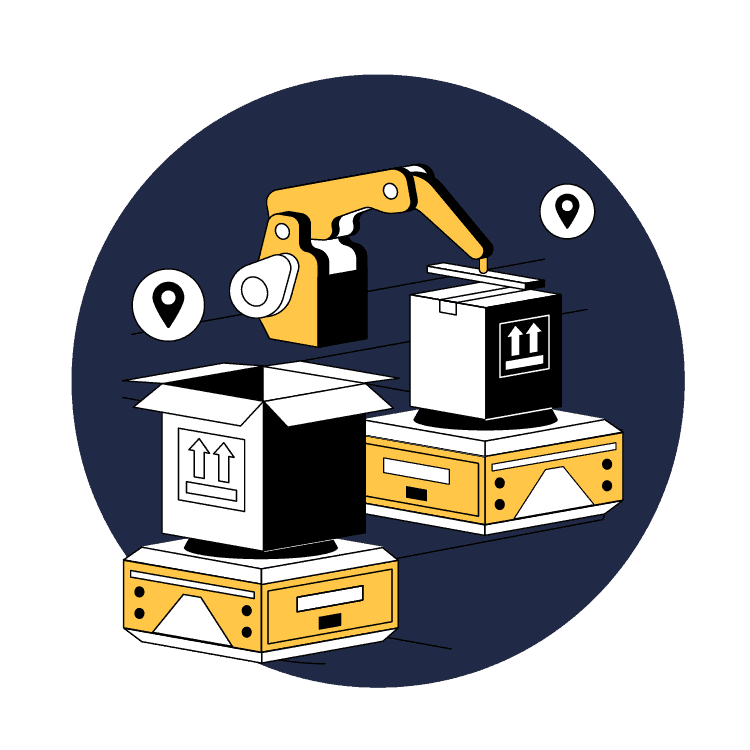Manufacturers struggle with maintaining data and information on spreadsheets and disconnected systems, resulting in inefficiencies, delays, and excess costs. Blue Ridge replaces these outdated processes with an integrated solution designed to help minimize waste, reduce downtime, and hit their goals consistently—so you can execute with precision and profitability.
Supply Capacity Planning Software
Integrated Solutions for Manufacturers.
Stop Guessing. Start Planning with Confidence.

Manufacturers today face a fast-moving and unpredictable market. Optimizing inventory with precision is essential to stay competitive and profitable. For years, Blue Ridge has been trusted by thousands of supply chain leaders worldwide for demand and supply planning solutions— giving them the tools to master the art and science of optimizing production to match inventory demand quickly and accurately. Industry-leading manufacturers know that supply and capacity planning is the key to staying ahead, and Blue Ridge provides the automation and intelligence to make it happen.
Software Purpose-Built for Manufacturers
We’ve taken our proven supply chain planning expertise in demand and replenishment optimization and tailored it specifically for manufacturers. From aligning supply plans with demand forecasts to capacity planning, we make sure you’re not wasting time in spreadsheets or scrambling to manage raw materials. With Blue Ridge Supply Planning, you’ll:
- See clearly what’s needed to meet demand with tools that align your production plans with available resources.
- Stay ahead of capacity constraints and unplanned downtime, so you can reduce costly delays and inefficiencies. Safety stock can protect against the variability in customer demand and unpredictable lead times, but is extremely costly for manufacturers to maintain.
- Stay balanced with smarter inventory strategies that prevent overproduction, stockouts, or wasted materials. Now is the time to tip the scales in your favor to balance your supply and capacity planning with an accurate demand forecast capability.

We don’t just help you manage your supply chain—we give you the visibility and precision to drive efficiency and profitability across your entire operation. Ready to be supply chain invincible? Take the mystery and risk out of seasonal, slow or intermittent items, promotions, investment buys and competitive threats with a daily, automated plan. At Blue Ridge, our capacity planning strategy offers a way to oversee existing inventory, expected manufacturing lead times, minimum order quantities and more information in a single solution. To get started, schedule a demo with our experts today!

Advantages of Blue Ridge Software: Supply Planning
Manufacturers often struggle with inefficient scheduling and limited visibility into production constraints. Our Supply Planning solution includes features like Master Production Scheduling (MPS) and Rough-Cut Capacity Planning (RCCP) that connect your demand forecasts, replenishment, and production planning into a seamless, automated workflow.
With Blue Ridge Supply Planning, you can:
- Eliminate manual scheduling errors: Automate planned order releases and integrate real-time demand signals.
- Reduce costly inefficiencies: Avoid overproduction and stockouts with data-driven inventory positioning.
- Maximize production capacity: Get instant visibility into constraints and optimize schedules for clear-to-build validation.
- Increase customer fill rates: Reduce unplanned downtime and react quickly to demand spikes without excess labor costs.
- Meet retailer compliance with ease: Prevent penalties by aligning production with OTIF and vendor-managed inventory (VMI) models.
How It Works
Blue Ridge’s Supply Planning solution brings clarity and agility to manufacturing and distribution supply chains:
Increase customer satisfaction and service levels.
Remediate manufacturing challenges and maintain satisfaction and service levels with your customers with alternate strategies.
Get ahead of the manufacturing demand curve with early visibility into constrained resources such as machine and labor capacities.
Manage from a single source of truth.
Balance unconstrained demand against constrained supply and budget to drive a realistic consensus plan for the company.
Gain greater visibility to oversee all the inventory production and logistics factors such as planned and received orders, existing inventory, expected manufacturing lead times, minimum order quantities, demand forecasts, leveling production, and safety stock – in a single solution.
Benefits of Optimized Capacity Planning
Having the right tools for your supply chain capacity planning provides the following:
Proactive Strategies
Use logistics capacity planning software to anticipate future resource needs so you have ample time to acquire the necessary resources and eliminate any excess before a project begins. Having insight into current project data and trends allows you to remain ahead of the curve and stay competitive.
Improved Resource Utilization
Balance the availability of your employees, equipment and materials. Capacity planning offers a way to prevent resource undersupply and oversupply so you can reduce downtime or wastage.
Managed Skill Inventory
Identify the tasks your employees can complete and update these records as they develop new skills through training. Searching a skill inventory lets you find the right team members for each project.
Enhanced Project Completion Rates
Allocate the right resources across various projects. Mapping out resource availability and project timelines allows you to coordinate tasks better, avoid overlapping and ensure seamless operations to improve project completion rates at your business.
Increased Cost Efficiency
Boost your organization’s revenue when you properly manage your resources for each project. Having the right amount of labor, materials and storage saves money over time.
Better Business Growth and Scalability
Get a clear picture of your organization’s productivity and efficiency levels. Identifying potential challenges and opportunities for expansion assists with your strategic decision-making process.
Guaranteed Success through Unified Supply Planning
Blue Ridge goes beyond just helping you manage your supply chain—it gives you the visibility, precision, and control needed to drive efficiency and profitability across your entire operation. With real-time insights and predictive analytics, manufacturers can proactively navigate market changes, mitigate risks, and improve overall supply chain resilience. The result?
A smarter, more responsive manufacturing process that minimizes waste, reduces costs, and ensures you can meet demand—without the chaos of spreadsheets and disconnected tools.















